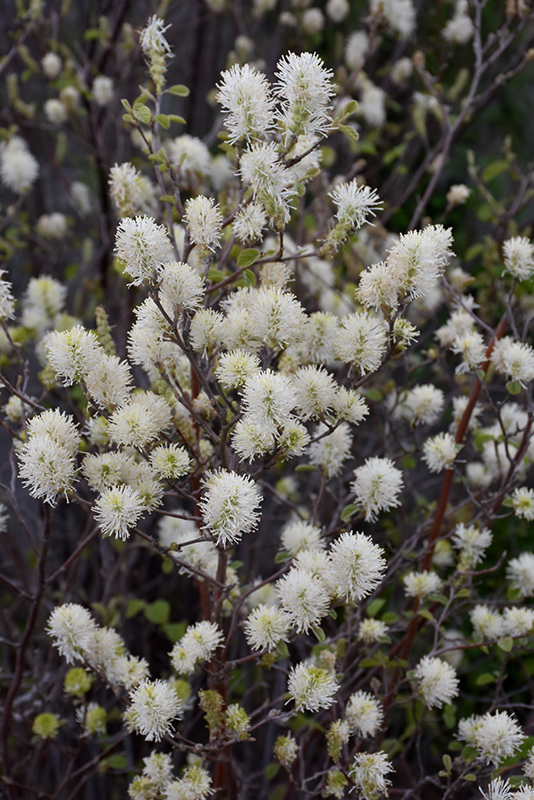Height: 8 feet
Spread: 6 feet
Sunlight:
![]()
![]()
Hardiness Zone: 4b
Other Names: Witch Alder
Description:
A large trouble-free landscape shrub; features showy white "bottle-brush" flowers in spring at the ends of the bare branches, spectacular fall colors and a dense, rounded habit of growth, prefers light acidic soils; a truly all-purpose landscape plant
Ornamental Features
Large Fothergilla features showy spikes of fragrant white flowers rising above the foliage in mid spring before the leaves. It has dark green deciduous foliage. The round leaves turn an outstanding scarlet in the fall.
Landscape Attributes
Large Fothergilla is a dense multi-stemmed deciduous shrub with a more or less rounded form. Its average texture blends into the landscape, but can be balanced by one or two finer or coarser trees or shrubs for an effective composition.
This shrub will require occasional maintenance and upkeep, and should only be pruned after flowering to avoid removing any of the current season's flowers. Gardeners should be aware of the following characteristic(s) that may warrant special consideration;
- Suckering
Large Fothergilla is recommended for the following landscape applications;
- Mass Planting
- Hedges/Screening
- General Garden Use
Planting & Growing
Large Fothergilla will grow to be about 8 feet tall at maturity, with a spread of 6 feet. It tends to fill out right to the ground and therefore doesn't necessarily require facer plants in front, and is suitable for planting under power lines. It grows at a slow rate, and under ideal conditions can be expected to live for 40 years or more.
This shrub does best in full sun to partial shade. It requires an evenly moist well-drained soil for optimal growth, but will die in standing water. It is not particular as to soil type, but has a definite preference for acidic soils, and is subject to chlorosis (yellowing) of the foliage in alkaline soils. It is somewhat tolerant of urban pollution. This species is native to parts of North America.



